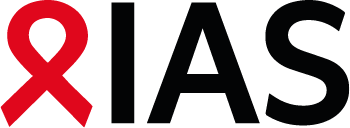Share Abstract
Rapid and efficient acute HIV detection by 4th generation Ag/Ab ELISA
Abstract Content:
Objectives: HIV NAAT with specimen pooling can identify Ab-negative acute HIV infections (AHI), but is technologically complex and loses efficiency at high prevalences. Fourth-generation EIAs (FGEIA) detecting HIV Ab and p24 Ag simultaneously have not been directly compared to HIV NAAT for AHI detection.
Methods: 933 consenting patients requesting HIV testing at a public HIV clinic in southern Brazil were screened with FGEIA (Genscreen Plus HIV Ag-Ab -Biorad) and NAAT (pooled 1:12). Confirmatory testing used parallel Axsym HIV1/2 gO MEIA (Abbott), IFA (Bio-manguinhos), Determine RT (Abbott) and WB (Genelabs). FGEA+ but Ab- or WB indeterminate specimens with available serum were confirmed by NAAT. HIV infection was defined by positivity on FGEIA and one or more confirmatory test; AHI was defined by one or more negative antibody test.
Results: HIV was detected in 183 of 933 specimens (HIV prevalence: 19.6%). Five cases of Ab- negative infection (AHI prevalence: 0.5%) were all detected by FGEIA (Sensitivity (Se) 100.0 (95CI; 97.4,100.0)). FGEIA had no false positives (specificity (Sp) 100.0 (95CI; 99.3,100.0)). Pooled NAAT detected no additional cases.
[FGEIA and confirmatory results for cases of AHI]
Conclusions: In a clinic setting with high HIV prevalence and mixed subtypes in Southern Brazil, HIV antibody tests failed to detect 1 to 3% of confirmed HIV infections. Pooled NAAT offered no advantage over 4th generation EIA screening for detection of AHI. Simpler FGEIA screening detects AHI with sufficient accuracy to make acute HIV based prevention strategies feasible in resource limited settings.
Methods: 933 consenting patients requesting HIV testing at a public HIV clinic in southern Brazil were screened with FGEIA (Genscreen Plus HIV Ag-Ab -Biorad) and NAAT (pooled 1:12). Confirmatory testing used parallel Axsym HIV1/2 gO MEIA (Abbott), IFA (Bio-manguinhos), Determine RT (Abbott) and WB (Genelabs). FGEA+ but Ab- or WB indeterminate specimens with available serum were confirmed by NAAT. HIV infection was defined by positivity on FGEIA and one or more confirmatory test; AHI was defined by one or more negative antibody test.
Results: HIV was detected in 183 of 933 specimens (HIV prevalence: 19.6%). Five cases of Ab- negative infection (AHI prevalence: 0.5%) were all detected by FGEIA (Sensitivity (Se) 100.0 (95CI; 97.4,100.0)). FGEIA had no false positives (specificity (Sp) 100.0 (95CI; 99.3,100.0)). Pooled NAAT detected no additional cases.
| # | FGEIA OD | MEIA | IF | Determine | WB | HIV NAAT | Subtype |
| 1 | Pos (3.136) | Pos | Neg | Pos | Pos | Pos | CB |
| 2 | Pos (2.897) | Neg | Neg | Pos | ND | QNS | QNS |
| 3 | Pos (0.442) | Neg | Neg | Pos | ND | Pos | QNS |
| 4 | Pos (0.950) | Pos | Pos | Pos | Indet | Pos | B |
| 5 | Pos (1.2) | Pos | Pos | Neg | Neg | QNS | QNS |
Conclusions: In a clinic setting with high HIV prevalence and mixed subtypes in Southern Brazil, HIV antibody tests failed to detect 1 to 3% of confirmed HIV infections. Pooled NAAT offered no advantage over 4th generation EIA screening for detection of AHI. Simpler FGEIA screening detects AHI with sufficient accuracy to make acute HIV based prevention strategies feasible in resource limited settings.
